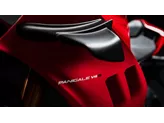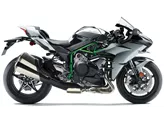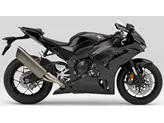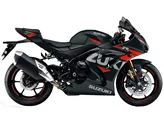Kawasaki Ninja ZX-10R 2012 vs. BMW S 1000 RR 2010

Kawasaki Ninja ZX-10R 2012

BMW S 1000 RR 2010
Overview - Kawasaki Ninja ZX-10R 2012 vs BMW S 1000 RR 2010
When comparing the Kawasaki Ninja ZX-10R 2012 and the BMW S 1000 RR 2010, it is clear that both motorcycles are powerful and offer impressive performance. However, there are some notable differences between the two.
In terms of engine specifications, the Kawasaki Ninja ZX-10R 2012 is equipped with an in-line, 4-cylinder engine with a displacement of 998cc. It has a bore of 76mm and a stroke of 55mm, resulting in an engine power of 200.1 HP and a torque of 114.3 Nm. On the other hand, the BMW S 1000 RR 2010 also features an in-line, 4-cylinder engine with a displacement of 999cc. It has a slightly larger bore of 80mm and a shorter stroke of 49.7mm, resulting in an engine power of 192 HP and a torque of 112 Nm. Both motorcycles have a compression ratio of 13.
In terms of suspension, the Kawasaki Ninja ZX-10R 2012 features an upside-down telescopic fork at the front, while the BMW S 1000 RR 2010 has a telescopic fork. Both motorcycles have an aluminium frame, providing a lightweight and sturdy structure.

Kawasaki Ninja ZX-10R 2012
When it comes to braking, both motorcycles are equipped with double disk brakes at the front. The Kawasaki Ninja ZX-10R 2012 has radial, petal technology brakes, while the BMW S 1000 RR 2010 has radial brakes. Both motorcycles have a front tire width of 120mm and a rear tire width of 190mm.
In terms of dimensions and weights, the Kawasaki Ninja ZX-10R 2012 has a wheelbase of 1115mm, a seat height of 813mm, and a kerb weight of 198kg. It has a fuel tank capacity of 17 liters. On the other hand, the BMW S 1000 RR 2010 has a longer wheelbase of 1432mm, a higher seat height of 820mm, and a slightly higher kerb weight of 204kg. It has a fuel tank capacity of 17.5 liters.

BMW S 1000 RR 2010
Now let's discuss the strengths and weaknesses of each motorcycle. The Kawasaki Ninja ZX-10R 2012 offers a powerful peak power and features ABS and traction control, providing enhanced safety and control. However, its handling may be suboptimal for faster routes, and its braking performance may diminish over time.
On the other hand, the BMW S 1000 RR 2010 offers superior performance and is equipped with well-functioning driving aids. It is known for its speed and offers an optimal price. However, it may have some weaknesses in terms of agility, complicated handling, braking stability, and a higher weight compared to the Kawasaki Ninja ZX-10R 2012.
In conclusion, both the Kawasaki Ninja ZX-10R 2012 and the BMW S 1000 RR 2010 are powerful and impressive motorcycles. The Kawasaki Ninja ZX-10R 2012 excels in terms of engine power and safety features, while the BMW S 1000 RR 2010 offers superior performance and a more affordable price. However, it is important for potential buyers to consider their specific preferences and riding style when choosing between the two.
Technical Specifications Kawasaki Ninja ZX-10R 2012 compared to BMW S 1000 RR 2010
Pros and Cons in comparison
Pros and Cons in comparison
Kawasaki Ninja ZX-10R 2012

Pour aucune autre moto, les pilotes d'essai n'auraient autant souhaité pouvoir mettre la main à la pâte, au moins un peu. Car la Ninja ZX-10R est une moto qui offre une excellente base pour la piste de course. Contrairement aux trois autres japonaises, elle est radicale et offre des performances de pointe compétitives par rapport à BMW et Ducati.
BMW S 1000 RR 2010

Nous le devons à un ordre strict et impitoyable du patron. Il y a des contrôles de performance sévères avant que les S 1000 RR ne quittent l'usine. Chez BMW, on ne voulait pas se mouiller et risquer qu'un seul rapport de banc d'essai décevant trouve le chemin des médias.
Price Comparison Avarage Market Price Kawasaki Ninja ZX-10R vs BMW S 1000 RR
There are a few key differences between a Kawasaki Ninja ZX-10R 2012 and a BMW S 1000 RR 2010. It takes less time to sell a BMW S 1000 RR with 52 days compared to 97 days for the Kawasaki Ninja ZX-10R. Since model year 2005 1000PS.de editors have written 51 reviews for the Kawasaki Ninja ZX-10R and 135 reviews for the BMW S 1000 RR since model year 2010. The first review for the Kawasaki Ninja ZX-10R was published on 1/11/2004 and now has more than 2,900 views. This compares to more than 4,000 views for the first review on BMW S 1000 RR published on 4/16/2008.





















